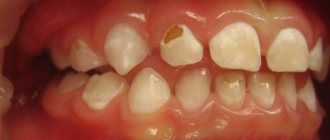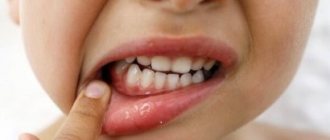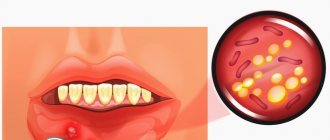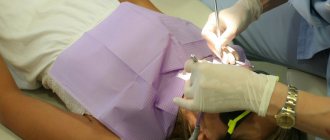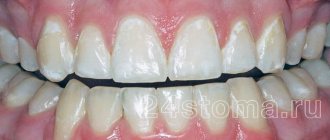Vitiligo (leukoderma) is a peculiar skin disease characterized by depigmentation, manifested in the form of light spots throughout the body, including the face. They appear due to the lack of melanin production. The disease can develop in people of any age, but the largest percentage affects children and adolescents. Vitiligo in children occurs with certain characteristics.
The disease itself is not contagious or dangerous, but it does bring some discomfort and cosmetic defects. This pathology is characterized by gradual development and a long course.
As the child gets older, the spots increase in size and take on different shapes. If foci of vitiligo are localized in open areas of the body, then under the influence of sunlight, dryness, thickening of the skin in the area of depigmentation, as well as peeling and redness may appear. It is worth noting that sun tanning causes spots to become more noticeable.
Treatment of vitiligo in children with Melagenin Plus lotion
Types of childhood vitiligo
Depending on where the foci of depigmentation are distributed, the following types of disease are distinguished:
Type A (Generalized appearance)
This type is characterized by a long course of the disease. Has the following forms:
- Acrofascial. It is characterized by damage to the distal parts of the limbs.
- Universal. Quite rare in children. Characterized by damage to a large area of skin (more than 80%).
- Mixed. Includes several subspecies; spots are localized over the entire surface of the body, including the head.
- Vulgar. Develops in two or more areas of the body.
Type B (Localized view)
The following forms are distinguished:
- Focal. Vitiligo spots are located only on one side of the body. This type of disease does not progress or spread.
- Zosteriform. It is characterized by a grouping of small lesions in one area of the body.
- Segmental. Depigmentation spreads along the location of large nerves and plexuses.
- Mucous. The spots are localized only on the mucous membranes, as well as on the genitals.
Stages of childhood vitiligo
The disease in children has the same stages of development as in adults:
- Initial. First, one small spot appears, which may not increase in size for a long time and is a single spot.
- Progressive. It is characterized by the appearance of a large number of new spots over several weeks and an increase in the size of old ones.
- Repigmentation. This stage is diagnosed if no new foci of the disease have appeared for several months, and existing spots darken, do not grow, and in some places completely disappear.
Parents should know that vitiligo is prone to recurrence. If you manage to completely get rid of the signs of the disease, it may return after some time.
Main symptoms
In general, symptoms of vitiligo in children begin to appear by the age of 9-10 years. At the same time, the clinical manifestations of the disease in infants and older children may be different and develop depending on the general condition of the child. Initially they are small in size, round in shape and pinkish in color. As the child grows, the spots also increase in size, take the form of blots and become milky white.
As a rule, depigmentation does not cause pain. However, too much sun exposure can lead to dryness, irritation and sometimes itching. If a child scratches the spots, it can cause infection of the wounds, as well as their inflammation.
If leukoderma is localized on the scalp, then in these places the hair becomes discolored and turns gray. In this case, the affected areas are less responsive to cold or heat. The disease does not affect the internal organs and systems of the body.
White spots on the skin: photodermatitis
04.10.2021
What to do if white spots appear legs , chest Will this really stay forever?
White spots on the body, especially in the indicated places, are a manifestation, that is, a symptom of a particular disease. Very rarely, in individual cases, spots are an independent disease. It is important to know whether pigmentation appeared on its own, or whether it is a consequence of past rashes, vesicles, papules, pimples , etc. This is a very important point, one might say that it is key in making a diagnosis. A correct diagnosis guarantees correct treatment.
In most cases, the described spots on the skin are a manifestation of the so-called “sun allergy”, or more precisely, photodermatitis. This allergy does not mean that if you go out into the sun you will always get spots. Photodermatitis is caused by the fact that ultraviolet rays react with certain substances on the skin or in the skin, forming spots. Very often, the spots are preceded by a rash, or “pimples,” but it happens that just spots appear, which can be either white or any other color.
Photodermatitis is divided into exogenous and endogenous. Accordingly, exogenous dermatitis is a reaction of ultraviolet radiation with carcinogenic substances on the surface of the skin. Such substances include cosmetics (deodorants, creams, ointments, perfumes, lipsticks, etc.), pollen, and other substances released by the environment.
As a remark, you can make the following: The most carcinogenic substances found in perfumes and most often causing photodermatitis include: Eosin, para-aminebenzoic acid, retinoids, essential oils, salicylic acid, mercury preparations, phenol. Also, spots of this type can appear after cosmetic procedures ( peeling , tattooing, etc.)
Endogenous photodermatitis is caused by an ultraviolet reaction, or by ultraviolet reaction products in the skin itself. Especially often, photodermatitis manifests itself in diseases of the liver , gastrointestinal tract, and endocrine system .
You need to understand whatever dermatitis or other disease is, it is primarily an allergic reaction , against the background of decreased immunity .
If your problem appeared in the spring, when the sun begins to shine more and warmer, and all the plants begin to turn green and bloom, then we can assume that this is an allergic reaction . Moreover, the stains appeared in those places that are covered with clothing in winter, and become exposed with the arrival of warm weather.
Whatever the reason, be sure to consult a dermatologist and allergist . It is rare to achieve a quick positive result by simply adjusting your lifestyle, although this is extremely important.
You need to take a number of antihistamines, use special ointments, creams or gels, and apply special cosmetic procedures.
We hope our answer helped you and you will soon solve your problem. We wish you and your loved ones all the best.
Published in Dermatology Premium Clinic
Causes of leukoderma in children
It is known that there is a genetic predisposition to vitiligo. The following factors may also influence the development of the pathological process:
- Improper functioning of the immune system. The child's body perceives melanocytes as foreign cells and begins to produce antigens for them.
- Chronic pathologies.
- Aggravated infectious processes.
- Metabolic disorder.
- Lack of vitamins and microelements.
- Chemotherapy.
- The influence of medications.
- Intoxication of the body.
- Chemical burns.
- Autoimmune diseases.
- Helminthiasis.
Sometimes the appearance of leukoderma in children is associated with unstable hormonal levels or psychological trauma.
Hormonal rash in infants and causes
In the first weeks after birth, 30-35% of babies develop symptoms of a characteristic rash. Neonatal cephalic pustulosis is also affectionately called “newborn bloom.” Young parents may hear other options: acne or baby acne, milia, three-week rash. These are all names of the same diagnosis. Hormonal rash predominantly occurs at the end of the first week of life, but the typical time frame can be extended to 3 months. Main causes:
- increased levels of estrogen in the blood;
- activation of the sebaceous glands;
- blockage of follicles;
- proliferation of yeast-like fungi.
Mechanism of development in the body
Hormonal rash in a child directly depends on the mother’s hormones. Excessive amounts of estrogens accumulated in the body after birth must be eliminated from the body, and hormonal levels should be normalized. Under the influence of the same factor, including adrenal androgens, the sebaceous glands are activated. They actively produce excess subcutaneous fat. The skin and pores do not have time to cope with the incoming amount. This leads to clogged pores and follicles. And the proliferation of yeast-like fungi contributes to the development of the inflammatory process. In 52% of cases, the Malassezia species was detected in smears. All processes are closely interconnected.
Treatment methods
Basically, the treatment of childhood vitiligo is aimed at restoring metabolism in the child’s body, since most often it is metabolic disorders that become the cause that affects the insufficient production of skin pigment. For treatment to bring positive results, it is advisable to use an integrated approach.
Symptomatic therapy
Its main goal is the maximum restoration of the lost pigment formation function. For this use:
- Local application of corticosteroids.
- Photosensitizing agents that restore normal pigmentation in affected areas of the body.
- In the case of a generalized type of disease, photochemotherapy is used.
- Herbal medicines.
- Ultraviolet treatment (its plus is safe for children over 3 years old)
To make the cosmetic defect less noticeable, skin whitening procedures are performed to reduce the contrast between healthy and depigmented skin.
Drug treatment
The following groups of medications are used for drug therapy:
- Glucocorticoids.
- Antioxidants.
- Immunomodulatory agents.
- Photosensitizing hormonal drugs.
- Multivitamin complex.
Surgery
The main methods of this treatment:
- Autoplasty (affected skin is replaced with healthy skin).
- Transplantation of own or donor melanocytes.
- Transplantation of cultured epidermis.
- Application of tissue genetic engineering.
Such actions are carried out only in extreme cases, since there is a high probability of rejection or suppuration of the transplanted tissue.
It is possible to cure leukoderma, but the final result will primarily be influenced by timely diagnosis of the disease and a well-chosen course of therapy.
How to make an appointment with a doctor
Hormonal rash does not require treatment, but it will not be superfluous to monitor the baby’s condition. In case of atypical development of the overall picture, therapy may be required. JSC "Medicine" (clinic of academician Roitberg) is located in the center of Moscow: 2nd Tverskoy-Yamskaya lane, building 10. Nearby are the metro stations "Mayakovskaya", "Novoslobodskaya", "Belorusskaya", "Tverskaya", "Chekhovskaya". You can make an appointment with a pediatrician by phone. A feedback option is available on the clinic’s website. In a special form you need to enter your information (name and phone number), after which the administrator will call you back to clarify information about the proposed appointment. The clinic welcomes doctors from various subspecialties. These are not only pediatricians, but also a dermatologist, cardiologist, psychologist, immunologist, allergist, neurologist, speech therapist and other doctors. The clinic pays attention to young patients, takes care of their emotional comfort, and uses advanced diagnostic technologies and innovative treatment methods.

